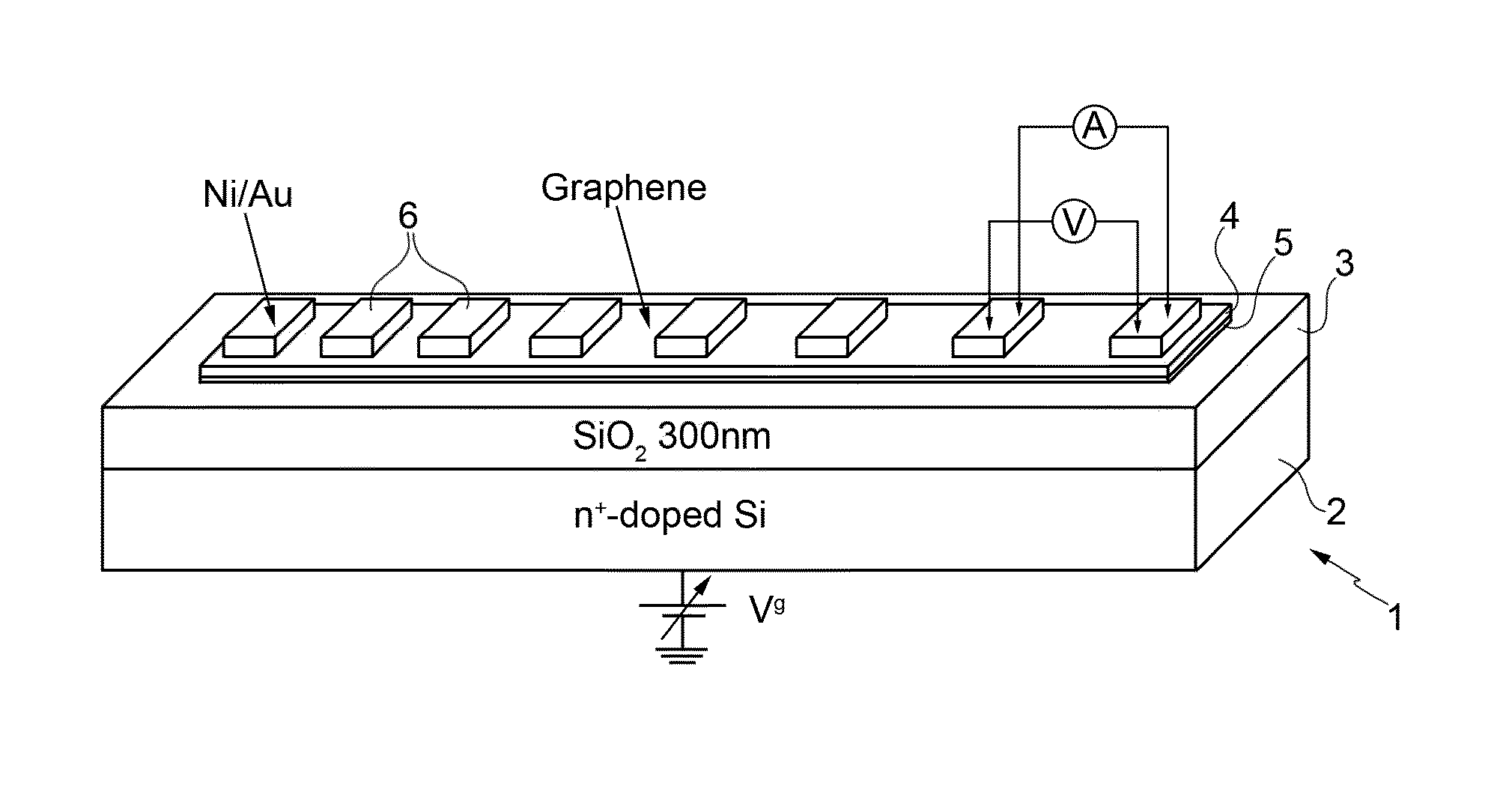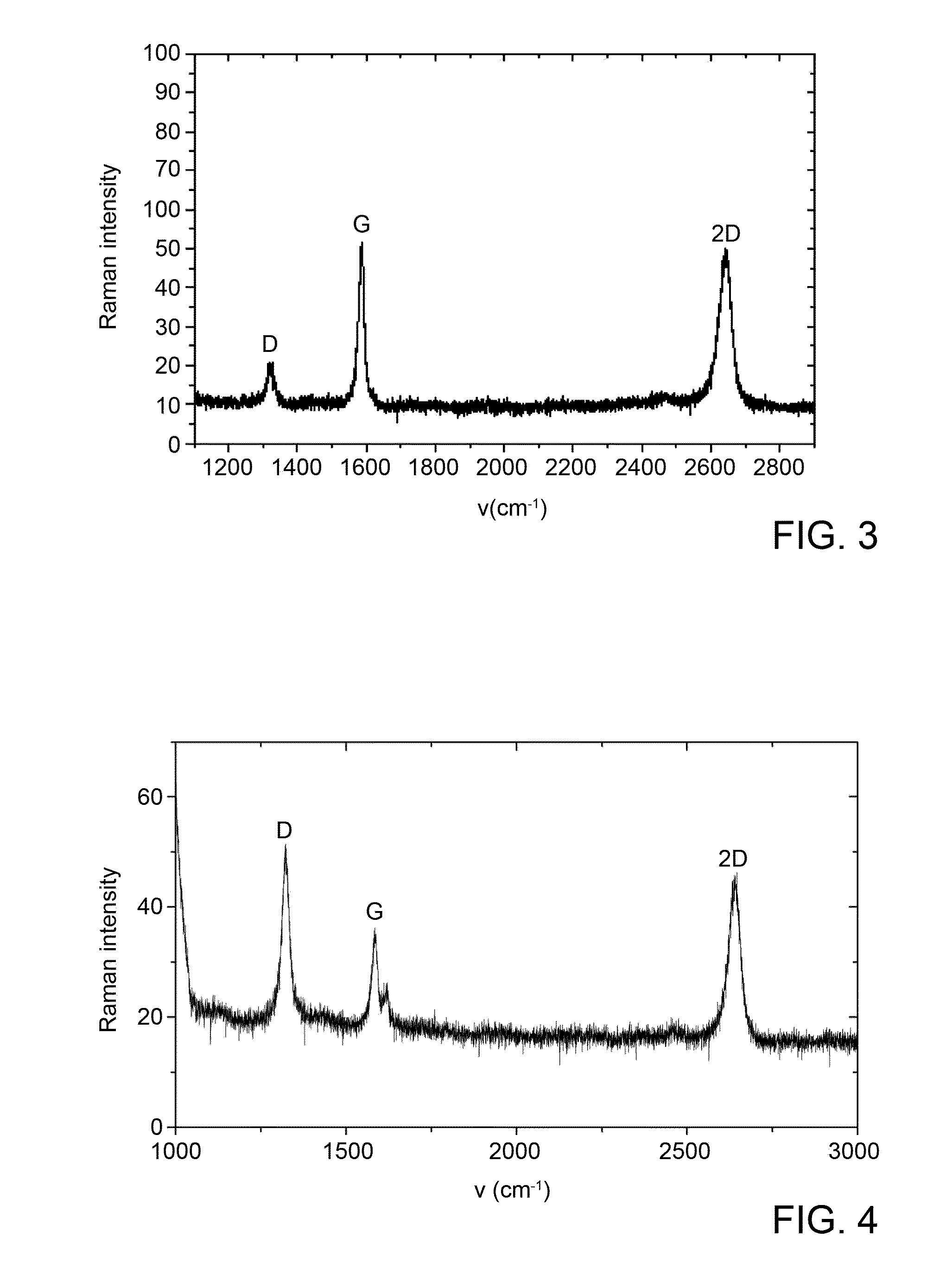Method for coupling a graphene layer and a substrate and device comprising the graphene/substrate structure obtained
a graphene layer and substrate technology, applied in the field of coupling a graphene layer and a substrate, and a device comprising said graphene/substrat structure, can solve the problems of affecting the performance of the device, affecting the quality of the device, so as to hinder the implementation of high-temperature processes and reduce the quality
- Summary
- Abstract
- Description
- Claims
- Application Information
AI Technical Summary
Benefits of technology
Problems solved by technology
Method used
Image
Examples
Embodiment Construction
[0061]One or more embodiments of the present disclosure regards a method for coupling a graphene layer 4 to a substrate 2 having at least one hydrophilic surface 3, the method comprising the steps of:[0062]providing a substrate 2 having at least one hydrophilic surface 3;[0063]depositing on the hydrophilic surface 3 a layer of a solvent 5 selected in the group constituted by acetone, ethyl lactate, isopropyl alcohol, methylethyl ketone and mixtures thereof; and[0064]depositing on the solvent layer 5 a graphene layer 4.
[0065]According to one embodiment, the hydrophilic surface 3 is made of silicon oxide.
[0066]The substrate 2 is preferably made of silicon oxide or passivized silicon. According to one embodiment the solvent may be a mixture of methylethyl ketone and ethyl lactate preferably present in a percentage of 40% and 60%, respectively.
[0067]Deposition of the solvent layer 5 may be obtained via dipping of the substrate in the solvent or via spin-coating.
[0068]In one embodiment, ...
PUM
 Login to View More
Login to View More Abstract
Description
Claims
Application Information
 Login to View More
Login to View More - R&D
- Intellectual Property
- Life Sciences
- Materials
- Tech Scout
- Unparalleled Data Quality
- Higher Quality Content
- 60% Fewer Hallucinations
Browse by: Latest US Patents, China's latest patents, Technical Efficacy Thesaurus, Application Domain, Technology Topic, Popular Technical Reports.
© 2025 PatSnap. All rights reserved.Legal|Privacy policy|Modern Slavery Act Transparency Statement|Sitemap|About US| Contact US: help@patsnap.com



